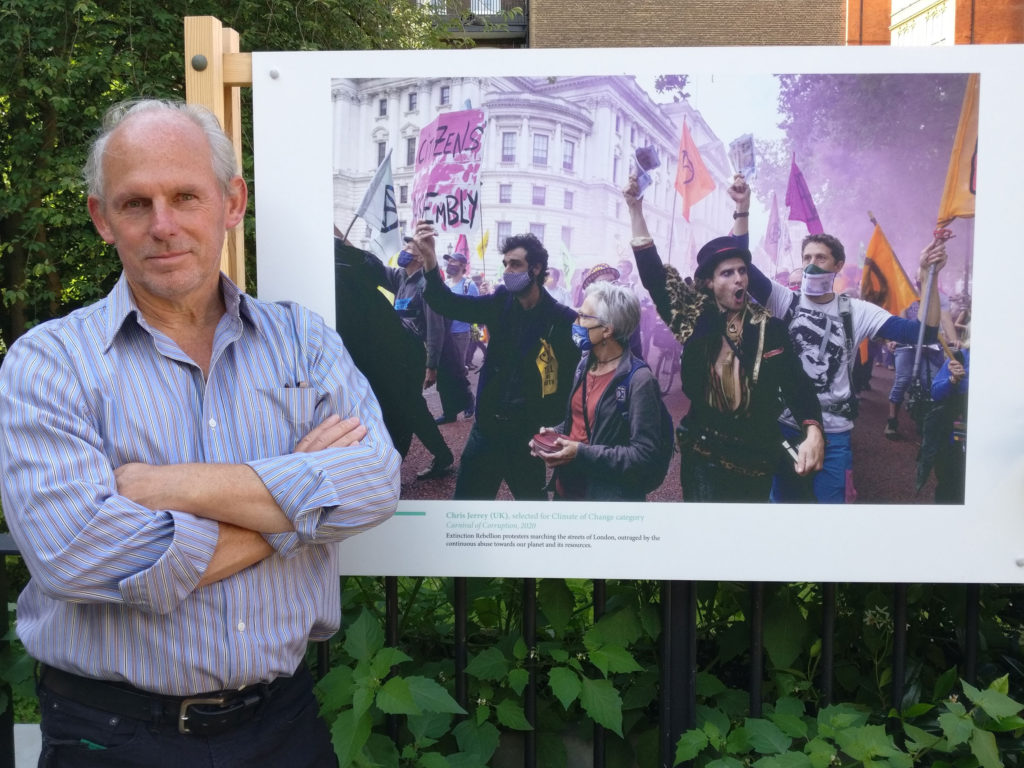






Animal Rebellion, Smithfield Market
Extinction Rebellion is not about the “environment”, it’s about us. People, humans, homo sapiens.
The science on climate change is clear. If we don’t make drastic changes very soon then crop failures, floods, droughts, wildfires, species loss, deforestation, land disappearing beneath the sea and millions of refugees fleeing from all of the above will make life in the future very difficult indeed. In some places, it will become impossible.
If we carry on treating the Earth as a dustbin and each other with disrespect, the future is bleak.
So I support people like David Attenborough, Caroline Lucas, Greta Thunberg, Michael Mann and Katherine Heyhoe who call for change. And I support groups like Extinction Rebellion, Greenpeace and Client Earth who are campaigning for change.
We need to:
Stop new fossil fuel licencing and exploration
Stop roadbuilding
Drastically reduce meat consumption
Make sustainable mass transit systems cheaper and easier than cars or aircraft.
Stop trucking food for hundreds of miles before it reaches the shop
Reduce our consumption of stuff
That’s just for starters. It’s vital and we need to Act Now.


My picture Carnival of Corruption was shortlisted for Earth Photo 2021 in the category A Climate of Change. Here is the picture on display at the Royal Geographic Society in London.
When I received the news that I was shortlisted, I was genuinely astounded. It’s a great feeling to be recognised in this way. Many thanks to Earth Photo, the RGS and the panel of judges.


On 23rd August 2021, Extinction Rebellion returned to the streets of London to stage the Impossible Rebellion. The rebellion is to push the climate crisis back onto the agenda of the government, business and the media. The crisis hasn’t gone away, so neither have the protests.


Beavers fell a tree by gnawing at the base until the trunk starts to look like two pencils balanced point to point. Eventually, there is not enough wood to hold the tree upright and it falls. Then the beaver strips the tree and uses the branches and leaves for food or dam building. These pencil stumps have not been seen in the wild for over 300 years since beavers became extinct in Britain.
“Became extinct” is too gentle a phrase to describe the violent demise of beavers. They were killed, every last one, by human hunters who considered that the beaver’s body parts, mainly skin and glands, had more value than the living creature. They were slaughtered into extinction.

Fortunately, in the latter half of the 20th century, ideas of preserving wildlife and its habitat became popular and found their way into law. In the 21st century, attention has turned to try to undo the damage of the past and re-introduce some of the creatures once native to Britain. If you read about re-introductions and wilding in Britain, sooner or later you will encounter the name, Derek Gow.
Gow is a conservationist who operates a farm on Dartmoor. He began re-introductions by breeding and releasing water voles, but rapidly realised that successful re-introductions depended on being able to release the animals into the right ecosystem. The animals didn’t just need food, they needed habitat, prey, peers and even predators to establish themselves in the land.

Beavers caught Gow’s eye because, by damming watercourses, they create exactly the conditions that support water voles; wetlands rich in insect and invertebrate life. Today, Gow has around 15 beavers on his Coombeshead Farm in Devon and has been involved in multiple re-introductions around the UK.

The beavers dammed a stream that ran in a deep channel. In places, the dam was nearly 3 metres high. The resulting ponds and wetlands provide a safe habitat for the beavers and many other animals and plants. This is exactly the biodiversity that is so lacking in many parts of the British countryside. Decades of intensive farming, hedgerow removal, road-building and thoughtless development have removed critical parts of functional ecosystems. Biodiversity, which is the very nature of life, needs space to form and grow. Beavers are nature’s engineers. They create the conditions for life.



Yesterday (1st June 2021) I covered the Extinction Rebellion action at BP Oil’s Hamble Terminal. I worked at the main gate and a colleague was at the side gate. Pictures were edited on-site (in the car) and uploaded to a file store. The pictures were then promoted to the media by the Media and Messaging team.
In terms of media coverage, this was one of the most successful actions I have been involved with. Local BBC and ITN reporters attended and presented video reports. Articles appeared in media in many countries. My work appeared in the following reports (not always attributed correctly!)
Evening Standard
The Independent
The Portsmouth News – second, third and fourth pictures incorrectly attributed to my colleague Will Templeton.
Express & Star
Belfast Telegraph
Irish Examiner
https://www.irishexaminer.com/world/arid-40303601.html
Guernsey Press
The Canary
Hampshire Live News
https://www.hampshirelive.news/news/hampshire-news/extinction-rebellion-bp-oil-southampton-5477910


The climate crisis is caused by human remoteness and disdain for nature. If we loved the natural world and considered it sacred, we would not do the harm that we do. We need to get back in touch with nature, feel the cold, the wet and the sun.